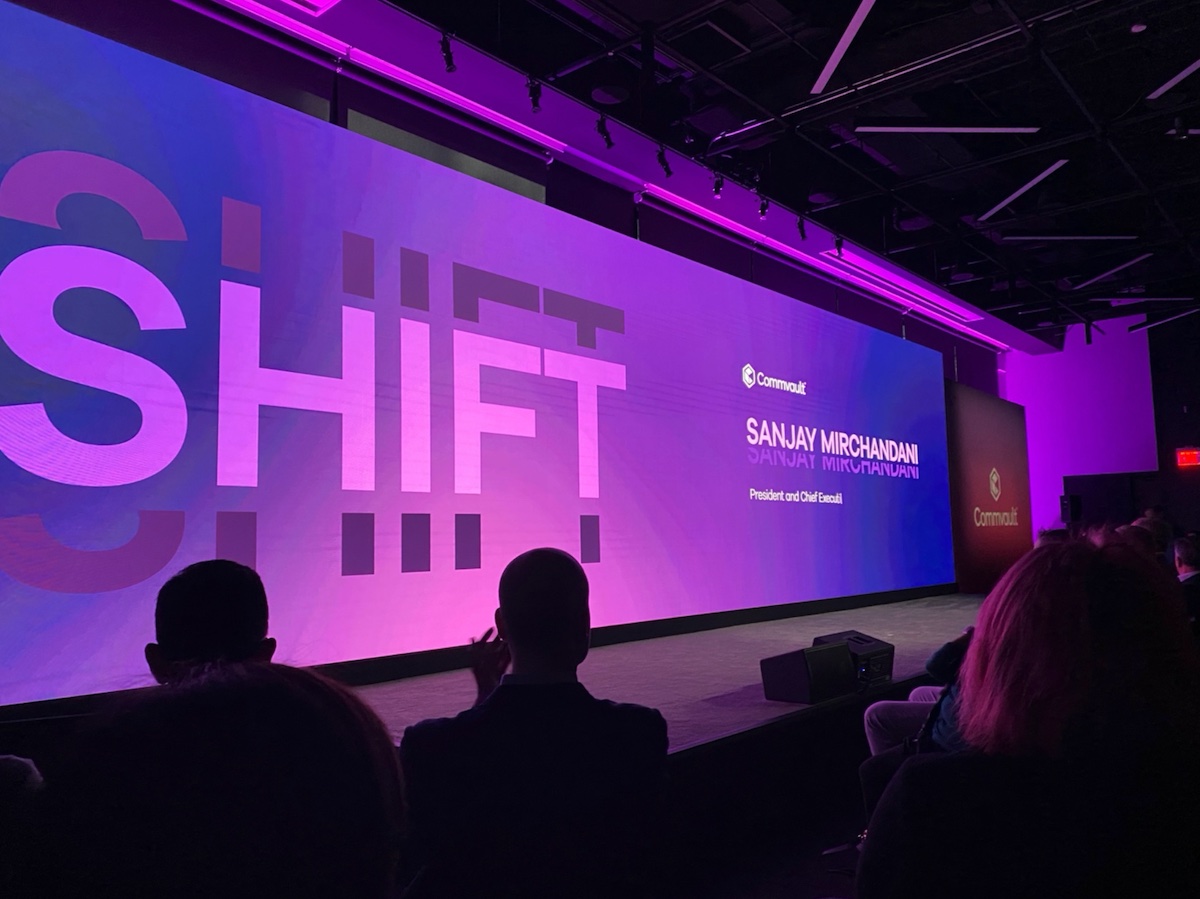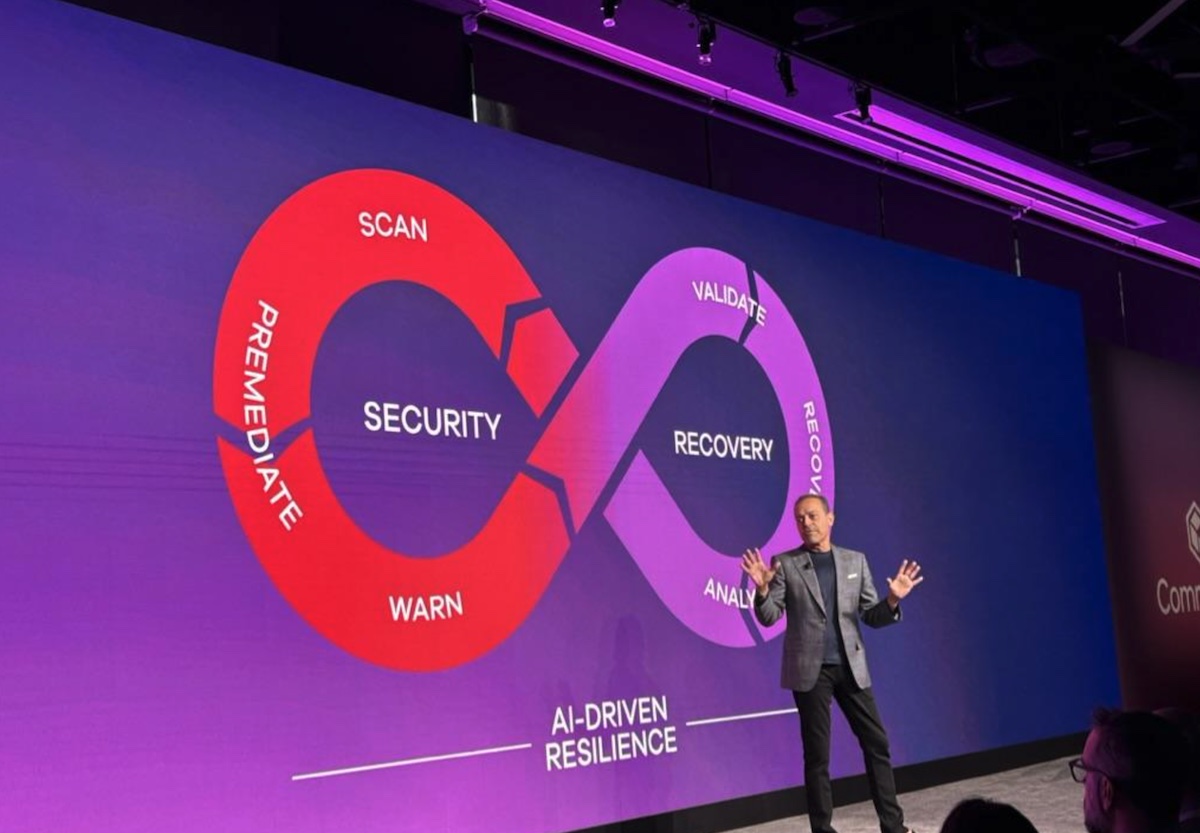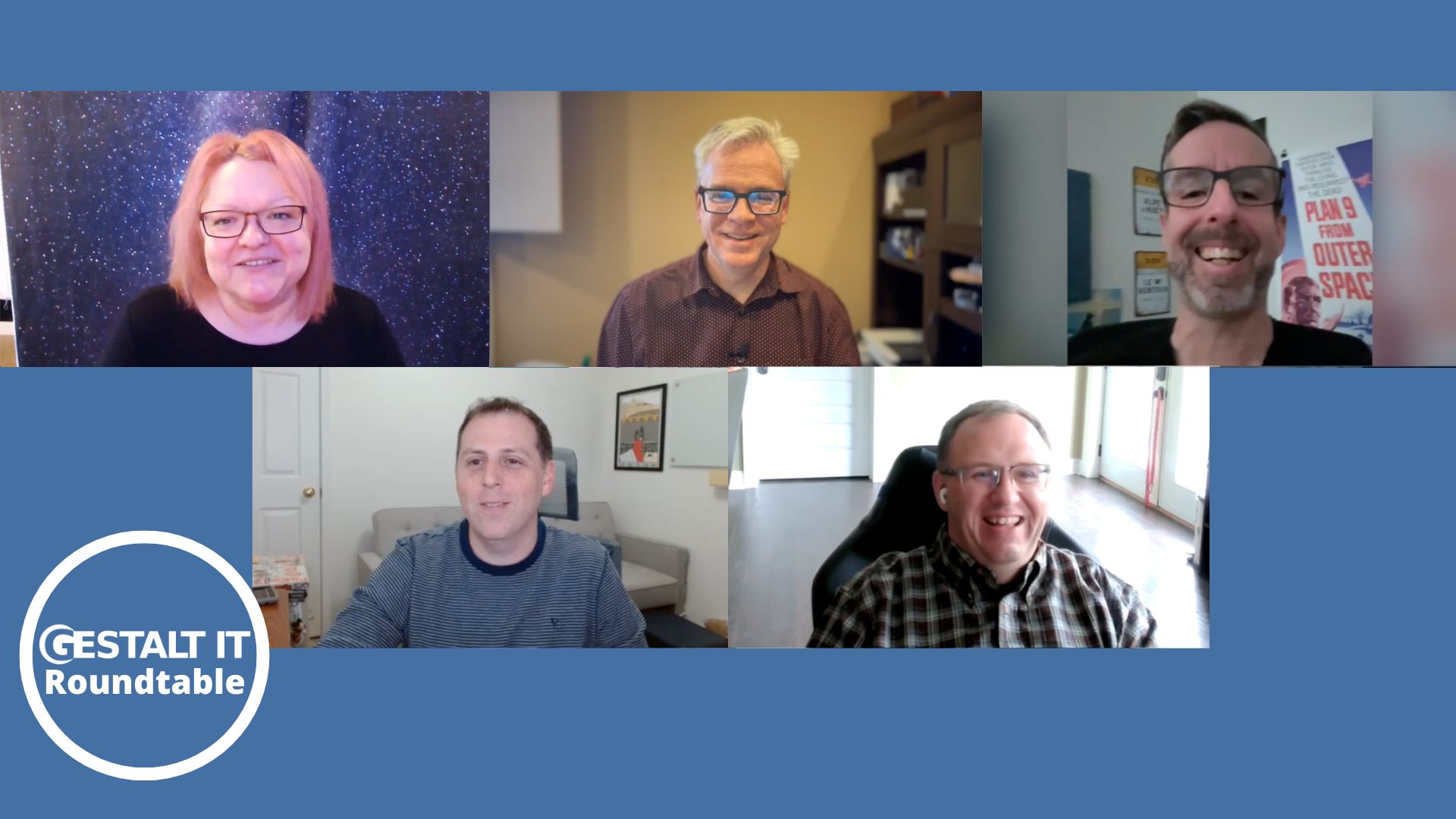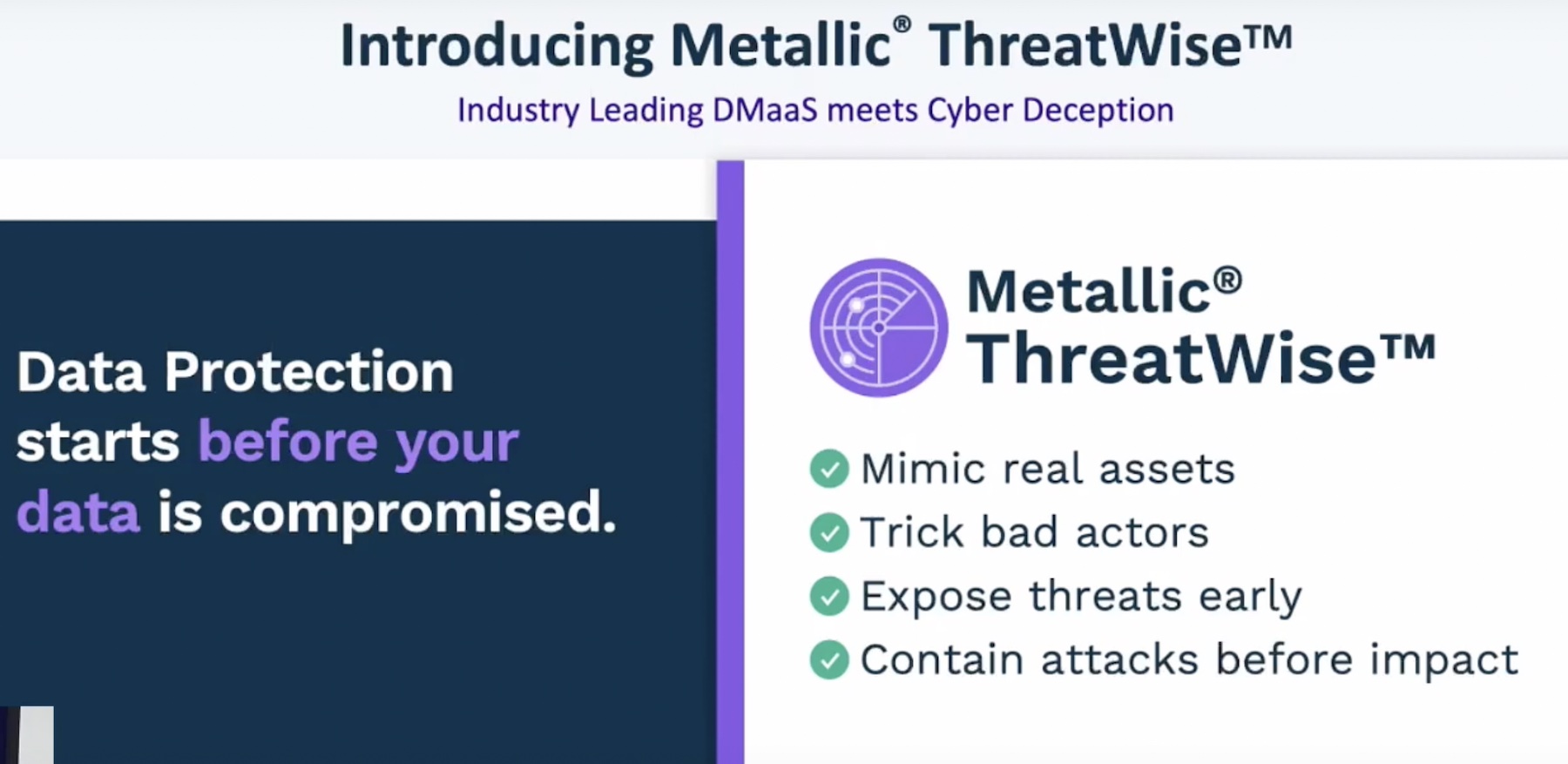Commvault announced Commvault Cloud powered by Metallic AI at the recent Commvault Shift. The announcement marked a repositioning of the Commvault brand. The emphasis has shifted to a unified approach focused on recovery and security everywhere.
It is safe to call this evolution than revolution, give Commvault’s progressive enhancements to Metallic, and the quiet de-emphasizing of its backup and recovery heritage. CEO, Sanjay Mirchandani, came in to revitalize the company and he has delivered. While Commvault Cloud is a natural outcome of this shift, it heralds a new and significant phase.
Recovery After a Breach
Commvault was keen to point out its ability to recover from anywhere to anywhere, but it is less interesting than the type of recovery imagined. Ransomware is viewed as a qualitatively different threat to data. It requires mass-restoration as opposed to the selective restores of accidentally deleted files that used to be the more common use case. Not anymore.
The change in risk has finally sunk in with organizations everywhere as cybersecurity has reached the highest levels of awareness, thanks to near-constant breaches and wildly successful attacks. Recovery is no longer a rare event, but something that is happening constantly.
A major challenge with full recovery has always been errors and failures. Perhaps the data wasn’t covered by a backup job, a job failed, media was lost or damaged, or someone deleted the backups accidentally or on purpose. The only way to be sure is to test the recovery.

Recovery testing is hard. You need an exact replica of the hardware and software of the source environment. With the advent of cloud, it’s possible to spin up temporary system and verify that recovery will work.
Commvault’s Cloudburst Recovery, and AI-assisted automation take it to the next level making the operational process of mass recovery much more straightforward. Ephemeral cloud infrastructure means companies do not need to pay for a DR environment that gets repurposed as critical dev and test because it wasn’t doing anything. One can safely and cheaply practice even large-scale recovery in advance.
Commvault’s moves to bake security into the system aligns nicely with the “always be recovering” approach. Scanning for security risks becomes part of the everyday, and flagging issues and responding, routine. Restoring systems to a quarantined analysis environment and performing forensic inspection is a daily occurrence so that when a major incident does occur, all these regular practices will help teams respond as if it’s just another day, which, in many ways, it is.
Conclusion
The vision of the future Commvault describes is one that data protection teams have long wanted. The threat of ransomware has moved data protection from a nice-to-have to a must-have in the minds and budgets of senior management. The technology and techniques of cloud, virtual machines, workload portability, and rapid recovery now make things possible we only dreamed of in the days of low-bandwidth data movers and tape.
To realize this dream, customers will need assistance from Commvault in moving from their existing approach to the somewhat radical idea of continuous recovery. Enterprises are complex beasts, and while Commvault’s claims to support any workload and recover them to anywhere are nice, the practical realities of doing so will still need to be explained. Customers need step-by-step plans, showing them how to get from where they are to where they want to be. A glorious destination is of little use if there is no navigable path to get there. It will remain time-consuming and sometimes difficult work, but Commvault has described a place we would all prefer to be.
Learn more about Commvault Cloud and Commvault Shift on Commvault’s website. For more coverage from Commvault Shift, keep reading here at Gestalt IT.










